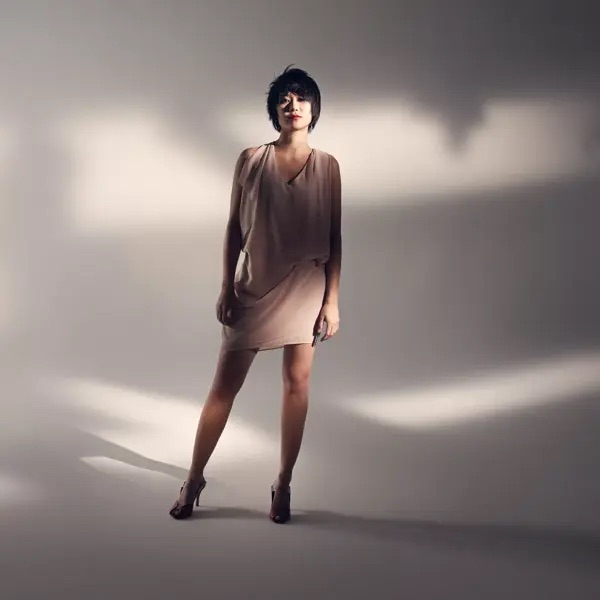Programme:
Barber: Piano Sonata in E flat minor, Op.26
Shostakovich: Prelude and Fugue in A minor, Op.87 No.2; Prelude in G sharp minor, Op.34 No.12; Prelude in C sharp minor, Op.34 No.10; Prelude and Fugue in F sharp minor, Op.87 No.8; Prelude in D minor, Op.34 No.24; Prelude in D, Op.34 No.5; Prelude in B flat minor, Op.34 No.16; Prelude and Fugue in D flat, Op.87 No.15
Chopin: Ballade No.1 in G minor, Op.23; Ballade No.2 in F, Op.38; Ballade No.3 in A flat, Op.47; Ballade No.4 in F minor, Op.52
Only a pianist of Yuja Wang’s reputation and calibre can not only sell out the Royal Festival Hall with a solo recital, but also force them to open up more seating on the stage itself. The last I saw a packed RFH solo recital was Vikingur Olafsson’s Bach Goldberg Variations, but this was a new level (it also meant an unprecedented number of coughs).

I was lucky enough to snap up returns tickets for this amazing programme which began with Barber’s Piano Sonata and a selection of Preludes and Prelude and Fugues by Shostakovich in the first half, and ended with Chopin’s Four Ballades in the second (plus encores that lasted as long as the second half itself proper).
Yuja Wang is probably one of the most written-about living pianists, not least because the way she dresses (tight dresses and heels so high she was almost wobbling as she approached the piano) has sparked controversy since the beginning of her career. I’ll not say that the fashion choice is unrelated to the performance, and that her performance should be judged by the music alone. Seeing her perform live yesterday, I believe the dress is very much part and parcel of the Yuja Wang experience, and that it is part of the Yuja Wang style of performance, symbolic also of the way she plays. In her performances, one experiences more Yuja than the composers she plays.
Her playing is, as many already know from internet clips, extremely virtuosic. From the very beginning it was already apparent that she lives for dramatic moments, especially when they allow her to unleash her virtuosic fury. She also had an extremely nimble touch in her leggiero playing that I have never heard before.
The opening of the Barber Sonata she took at a slower pace than normal and I enjoyed the space she allowed for all the different rhythmic motifs and patterns to coexist. She was very good at creating an atmosphere for her music. What was slightly lacking was her emotional involvement, the tragic emotional depth that her tempo choice allowed for, especially in the Adagio mesto third movement, but which she never quite reached for, despite creating such a thunderous sound in the climax. Needless to say, the fearsome fugue finale, played with ease at breakneck speed, combined with her impeccable leggiero touch, was extremely exciting, and pushed us at the edge of our seat. Her mastery of the keyboard is just short of miraculous, as she sits in a relaxed position, moving her body only when she absolutely needs to, while throwing her hands around à la Argerich yet hitting the notes with pinpoint accuracy. What is amazing about Yuja is that in the virtuosic pieces she always plays at a speed just on the edge, teetering slightly over the abyss, almost losing control but never quite so, and that’s what makes her playing so exciting. She herself seemed to crave this rush of adrenaline too.
The Barber seemed to have warmed her up, because the selection of Shostakovich Preludes and Prelude and Fugues were in my opinion the best performances of the recital. Her temperament fit the music to a tee; under Yuja’s fingers, the playfulness, irony, sarcasm and dramatic explosiveness of Shostakovich’s music really jumped out at me. It seems she delights in short bursts of fiery energy rather than longer, structural works. We weren’t simply witnessing impressive acrobatic virtuosity, but also an intellect of a higher order at work as shown by the way Yuja blazed through the notoriously difficulty fugue in Shostakovich’s 15th Prelude and Fugue, still managing to delineate every melodic line amid the frenzy of chromatic voices and incredible speed.
However, what worked really well for her became a slight letdown in the second half of her programme, which comprised of Chopin’s Four Ballades.
Instead of performing them chronologically, Yuja chose to first play the Second, then the Third, followed by the First and finally the Fourth. I don’t quite agree with what Alex Ross said in a recent New Yorker article reviewing the same programme, about how it reveals a grander overall structure across the four ballades. To me they still seem like four standalone pieces.
In Chopin, the dramatic outbursts of energy, incredible velocity and thunderous moments only served to downplay the integrity of their structures, causing them to feel fragmented. The extreme lightness of touch she applied to the lyrical sections, making the sound barely audible, made those beautiful sections lose substance. After a while, it seemed as if she was drifting through the harmonies, waiting for the dramatic sections to strike again. But strike again she did, and with the most incredible force and accuracy, rendering me speechless in the codas. There is no denying the force of her will in those sections, especially in the first and fourth ballades. Nevertheless, as a whole her performance of the Chopin ballades were rather too predictable.
Apparently she played about 45 minutes of encores, all to the most incredible whoops and cheers I’ve heard in a concert hall by an audience who cannot get enough of the Yuja spectacle. I stayed for three of them. The last one, a ridiculously virtuosic arrangement of the Scherzo from Tchaikovsky’s “Pathétique” Symphony by Samuel Feinberg, performed in a manner reminiscent of her viral YouTube performance of the Korsakov/Cziffra “Flight of the Bumblebee”, rendered me absolutely speechless.

Blog featured image credits to Southbank Centre.

Leave a comment